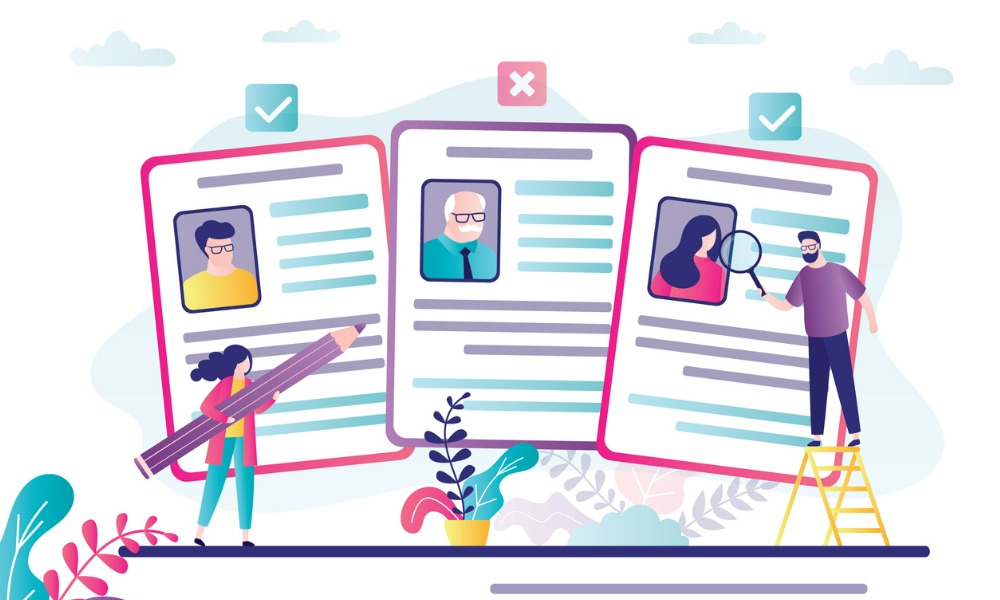
Having a diverse age range in your organisation is more conducive to cognitive diversity than race or gender

Diversity, inclusion and equity (DEI) are fast becoming the most important aspects of organisational strategy. Something HR leaders have long known – that diverse companies are inherently more successful ones – is now finally gaining momentum in the C-suite. And while it’s all progress in the right direction, DEI has left one very important aspect behind – ageism.
Anti-ageism seems to have grown old and out of fashion. It’s not as topical as trans rights or as sensational as sustainability, and as a consequence organisations have passed it over in favor of more shiny promises. But with a workforce that’s increasingly older, with people delaying retirement either out of necessity or preference, ageism isn’t something employers can afford to overlook any longer.
A report from Jobsite found that 47% of jobseekers aged between 55-64 are unemployed, which is 13% more than younger candidates. What’s more, older workers are 50% more likely to take over a year to secure a new position. Which begs the question, what place does anti-ageism have in modern DEI initiatives? Well, according to research from Zircon, having a diverse age range in your organisation is the most important factor for enhancing cognitive diversity – more so than ethnic origin, gender, or religion.
“The whole idea behind concept of cognitive diversity is that if we bring teams of people together who’re cognitively diverse from one another, in other words they think differently to one another, then they approach problems and discussions in different way,” says organisational psychologist Dr Amanda Potter. “They articulate challenges in different ways and they're more likely to disagree – they're more likely to challenge one another, ask questions, clarify or slow down the process of problem-solving. This in turn actually creates better, problem solving ideation.”
An added benefit of having an authentic multigenerational workforce is that everyone feels comfortable enough to bring their whole selves to work. By creating positive conflict to enhance problem-solving ability, everyone feels empowered to speak up – even if it causes a fallout. Because, in the end, disruption always leads to innovation.
“One hundred per cent of people will get old,” Potter says. “But by comparison, age barely ripples in the diversity tide. The proportion of the working population over 50 has gone from being 17% of the workforce to being more than 33% – and by 2029, nearly half of the entire workforce will be over 45. It’s about pulling on our strengths and differences, and understanding that everyone has their own unique set of skills to offer. Working together, across multigenerational teams, is an absolute must for organisational success.”
Earlier this year, Lisa LaFlamme was dropped as an anchor on CTV National News. The move to end LaFlamme’s contract after 35 years was met with shock by the wider general public. And while those in power have denied that the incident had anything to do with LaFlamme’s age or sex, it inevitably led to questions around ageism.
I have some news... pic.twitter.com/lTe3Rs0kOA
— Lisa LaFlamme (@LisaLaFlamme_) August 15, 2022
Employers facing age discrimination suits before the Equal Employment Opportunity Commission have given over a total of $810 million to settle charges filed from 2010 to 2018. By continuously ignoring ageism – be it against younger, middle-aged, or older workers, you’re not only leaving yourself open to legal battles, you’re hurting your culture – perhaps irreparably so. For employers, it’s a case of looking at your metrics, of knowing your people, and sussing out if you have a hidden ageism problem that needs fixing.
“HR professionals need to examine data,” says Dr Melanie Peacock, associate professor of HR at Mount Royal. “How do the age demographics of people hired, promoted, or trained in your company compare to industry standards? How does that compare to organisations of your size? Or to overall demographics of the region you draw employees from? Policies clearly articulating that ageism will not be tolerated should be developed and implemented.”
Employers need to start looking at this as an opportunity – a chance to hire more experienced jobseekers that will bring a whole host of new skills and talents to your organisation. In the face of the ongoing Great Resignation, there’s never been a more important time to invest in older employees. By showcasing that you’re an inclusive company, one which supports workers across all generations, you’re already positioning yourself as an employer of choice – something that’s worth its weight in gold right now.